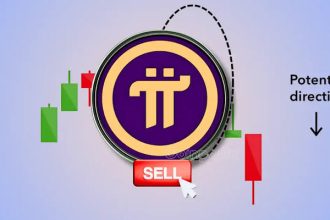In the ever-expanding universe of cryptocurrencies, Pi Network Coin and Ripple XRP stand out as ambitious projects with unique objectives. As investors and enthusiasts navigate this dynamic landscape, a comparative analysis of these two digital assets provides valuable insights into their concepts, technologies, and potential impacts on the financial industry.
1. Concept and Purpose
Pi Network Coin: Envisioned as a decentralized network, Pi Network Coin harnesses the power of smartphones for mining Pi coins through a mobile app. The aim is to empower individuals to contribute to the network without compromising device performance.
Ripple XRP: Ripple XRP, on the other hand, serves as both a digital currency and a payment protocol designed for seamless cross-border transactions. Ripple focuses on enhancing the efficiency and speed of international remittances, facilitating global fund transfers for institutions and individuals.
2. Technology and Consensus Mechanism
Pi Network Coin: Pi Network Coin employs the “Proof of Authenticity” (PoA) consensus algorithm, a departure from traditional PoW or PoS mechanisms. This algorithm prioritizes user trust and engagement while ensuring network security.
Ripple XRP: Ripple XRP operates on the Ripple Protocol Consensus Algorithm (RPCA), relying on a network of trusted validators to confirm transactions and maintain consensus.
3. Scalability and Transaction Speed
Pi Network Coin: As Pi Network is still in development, its scalability and transaction speed are yet to be fully tested. The network aims to address scalability concerns by leveraging its existing user base, exceeding 10 million users globally.
Ripple XRP: Ripple’s payment protocol boasts impressive scalability and high transaction speed, handling up to 1,500 transactions per second—outpacing many other cryptocurrencies.
4. Adoption and Industry Partnerships
Pi Network Coin: In its early stages, Pi Network Coin focuses on building a user base and refining technology. It currently lacks significant industry partnerships or adoption beyond its growing community.
Ripple XRP: Ripple has forged partnerships with numerous financial institutions and payment providers globally. Collaborations with major entities like American Express, Santander, and Standard Chartered underscore Ripple’s adoption and integration into established financial systems.
5. Regulatory Environment
Pi Network Coin: As Pi Network Coin is in development and not yet listed on public exchanges, its regulatory status remains uncertain. Regulatory scrutiny is expected once it enters the open market.
Ripple XRP: Ripple has faced regulatory challenges, with the SEC filing a lawsuit alleging XRP is an unregistered security. This legal battle has introduced uncertainties around XRP’s regulatory standing, impacting its market performance.
In conclusion, Pi Network Coin and Ripple XRP are distinct cryptocurrencies with varied objectives and approaches. Pi Network focuses on decentralized smartphone mining, while Ripple XRP prioritizes facilitating cross-border transactions. Each project presents its technological innovations and growth potential, yet their current developmental stages and regulatory landscapes differ significantly. As the cryptocurrency market evolves, thorough research and careful consideration of these factors remain essential for informed decision-making. Read Similar Story













Hi ☃️ Snowman! Join my team on ice and receive 10 ice coins when you sign-up using my referral code: kanest
https://ice.io/@kanest
#Ice #Network #IceNetwork #Pi #PiNetwork #Mine #Miner #Mining #Coins #Referral #Free #kyc #everyone
Hi ☃️ Snowman! Join my team on ice and receive 10 ice coins when you sign-up using my referral code: kanest
https://play.google.com/store/apps/details?id=io.ice.app
#Ice #Network #IceNetwork #Pi #PiNetwork #Mine #Miner #Mining #Coins #Referral #Free #kyc #everyone #SidraBank #Sidra #Crypto #signup
I am sending you 1π! Pi is a new digital currency developed by Stanford PhDs, with over 47 million members worldwide. To claim your Pi, follow this link https://minepi.com/kanest and use my username (kanest) as your invitation code.
#Ice #Network #IceNetwork #Pi #PiNetwork #Mine #Miner #Mining #World #Coins #Referral #Free #kyc #everyone #SidraBank #Sidra #Crypto #signup #sign #Money #Bitcoin #Btc #Usdt #Bnb #ethereum #Meta #P2P #Binance #Okx #Web3 #Cryptocurrencies #coinmarketcap
https://mobile.over.network/en/invite/84O2QJ3ONS
Mine Pi for free on your phone! I am sending you 1π! Pi is a new digital currency developed by Stanford PhDs, with over 47 million members worldwide. To claim your Pi, follow this link https://minepi.com/yajer72 and use my username (yajer72) as your invitation code.
I am sending you 1π! Pi is a new digital currency developed by Stanford PhDs, with over 47 million members worldwide.
To claim your Pi, follow this link
https://minepi.com/dreamtreats and
use my username (dreamtreats) as your invitation code.
Satoshi – Global Free Airdrop
Satoshi is the world’s top one free airdrop platform,we will have various outstanding projects and tens of million crypto world residents.
https://www.btcs.love/invite/6yygn